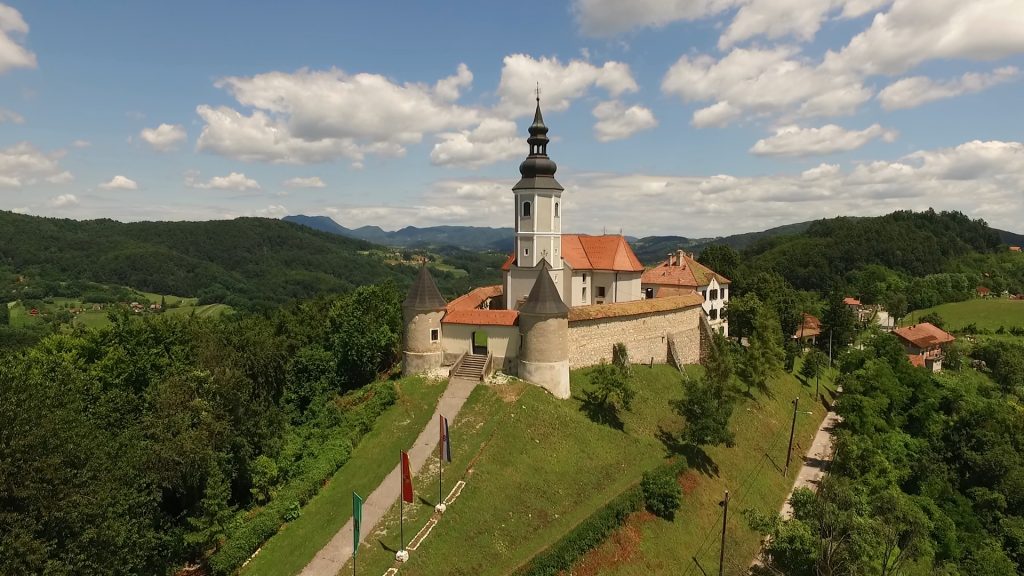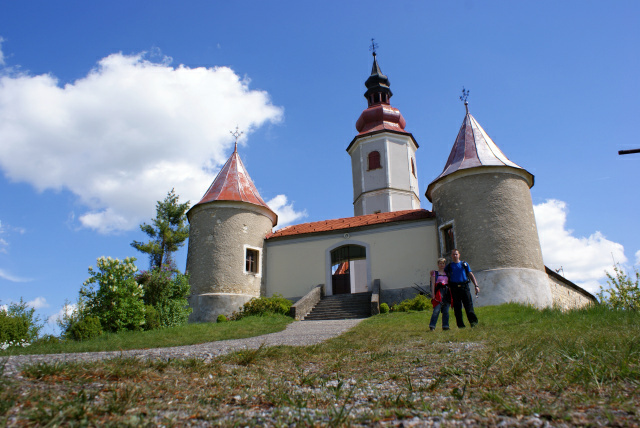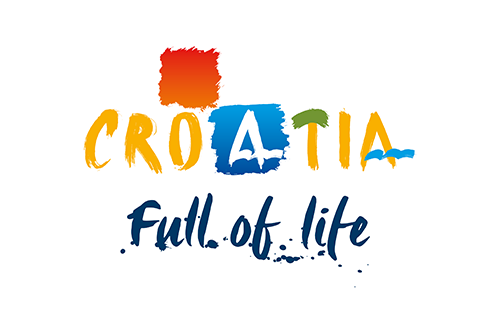This endeavor is a single-nave church that can be approached by stairs from two sides. It is polygonal in shape and with the side chapels it forms a cross. Alongside the main façade raises a tower, whose upper part is octagonal in shape. As towards the top there was very little space, the atrium and its cylindrical turrets whose arches connect to the two chapels are also pressed close against the church. From the outside it more looks like a defensive fort, while the inside of the arches with its “pictograms” calls forth miraculous events of Mary’s answers and protection, made by an unskilled amateur hand.
There was an older Marian shrine here already in the 16th century, and it is mentioned in 1639 as a chapel belonging to Desinić Parish. The only thing remaining of that chapel is a small altar from 1652 that was brought here from Krapina. The existing church was built in 1708 and consecrated in 1713, while it became the parish church only in 1799. It was consecrated by Adam Ratkaj, the bishop of Senj, whose portrait is kept in the parish house. The main altar from the second half of the 18th century is richly decorated with statues in the baroque style. The most valuable is perhaps the Gothic statue of the blessed virgin with the baby Jesus made around 1500. The two altars from the Late baroque period built into the wall are decorated with a triumphant arch and dedicated to All Saints and the Magi. The altars were built around 1830 and they exhibit some Classicist motifs. In the right side chapel there is the altar of St. valentine built in the baroque style, while the left chapel houses the altar of the Holy Trinity from 1779. The pulpit with Classicist garlands can be dated to 1805. A sacristy cabinet in the baroque style, a lectern, priest’s vestments, a baroque candelabrum, the processional statue of Our Lady, the statue of the resurrected Christ (also from the baroque period), as well as several fine examples of wrought iron artifacts (roof cross, doorknobs, keys…) are just some of the liturgical furnishings that have survived until today.
At the end of our pilgrimage to five Marian shrines of Zagorje, let us imagine five fingers on Mary’s merciful right hand: from Marija bis-trica, belec, Lobor and Trški vrh, to vinagora. As if the whole of Hrvatsko Zagorje is nested in her palm. And vinagora, even if it may appear like the little finger, still is a finger on the holy hand of the most faithful advocate, or more precisely: of the mother’s hand.
Directions







